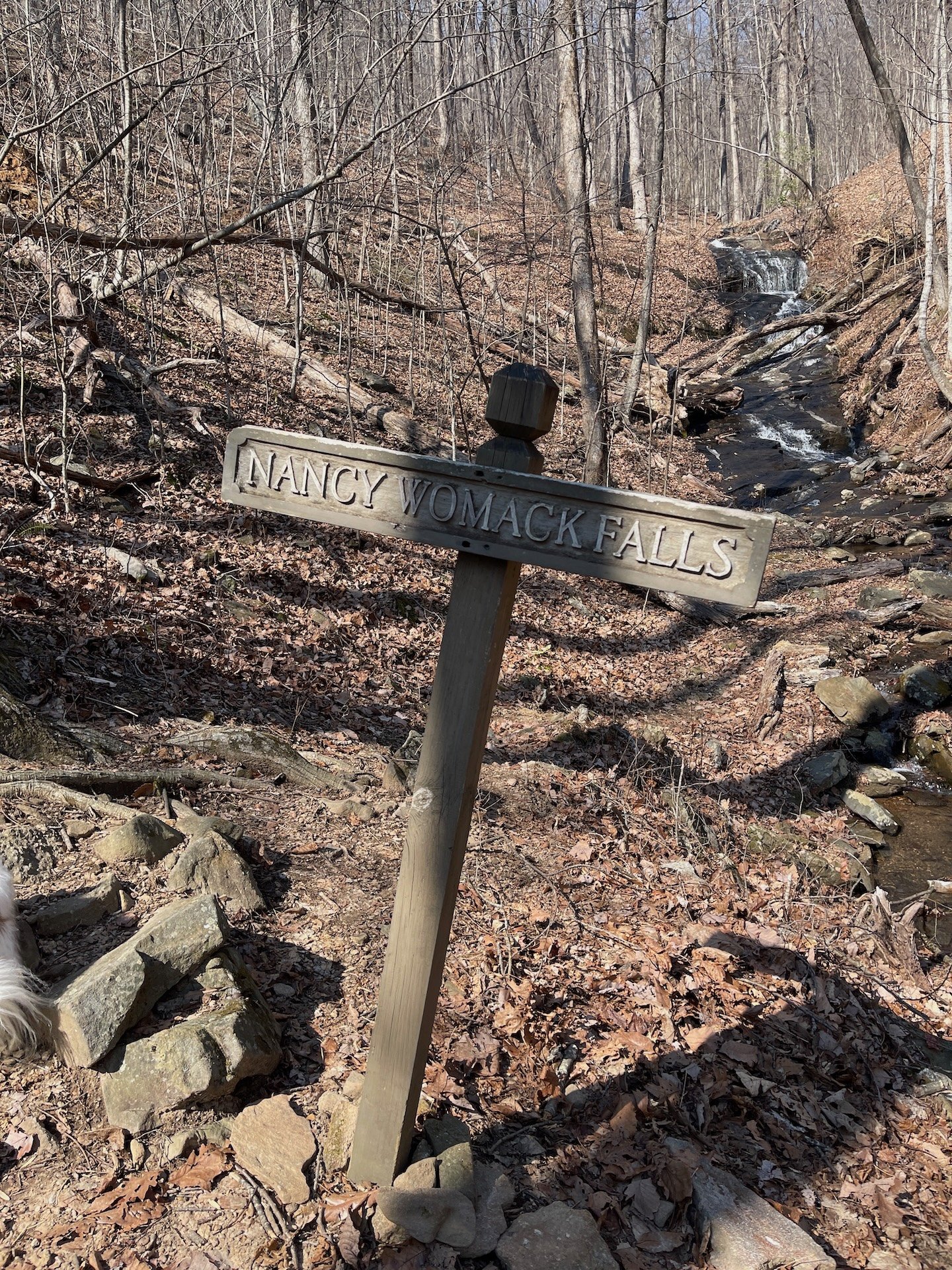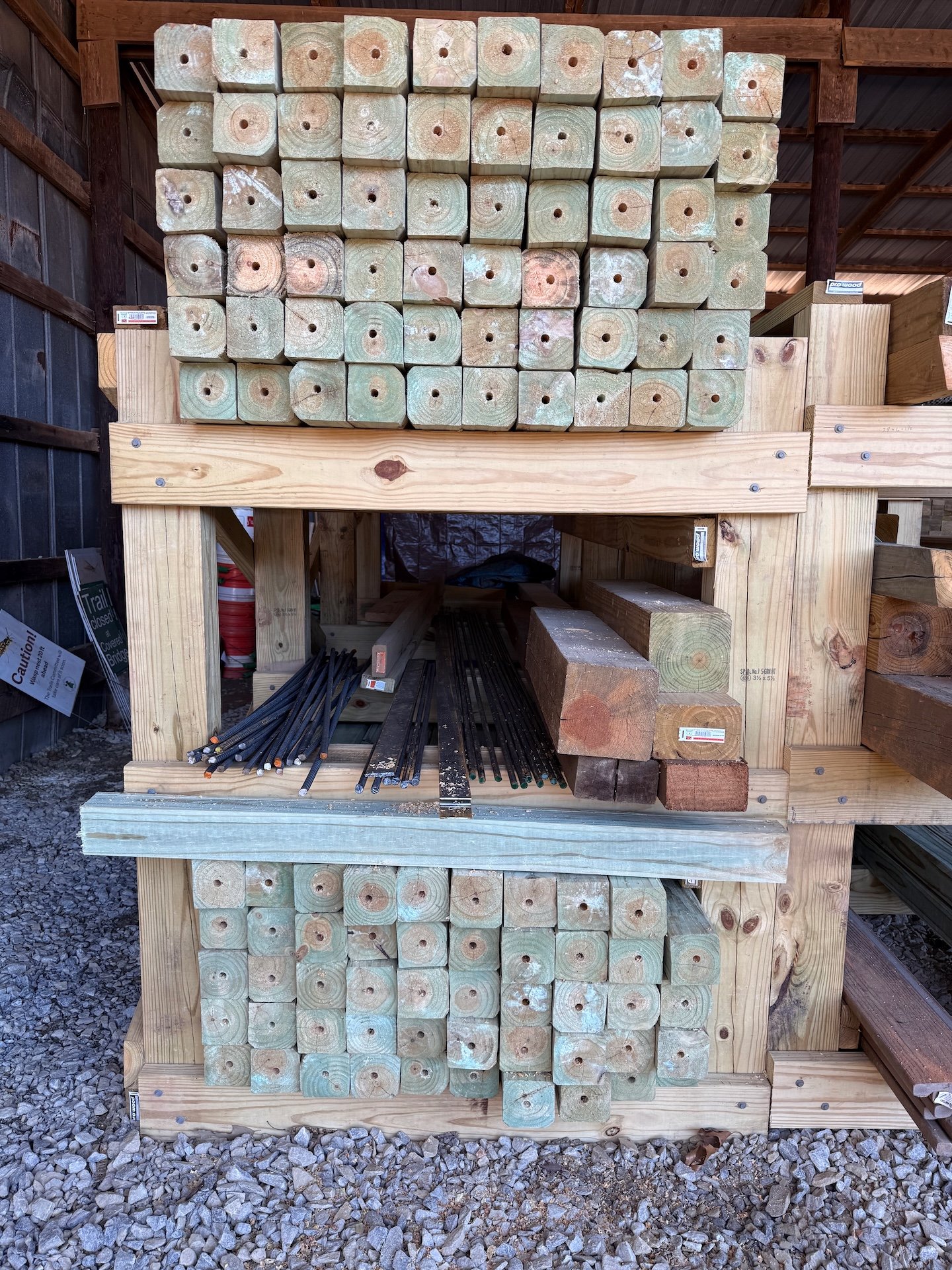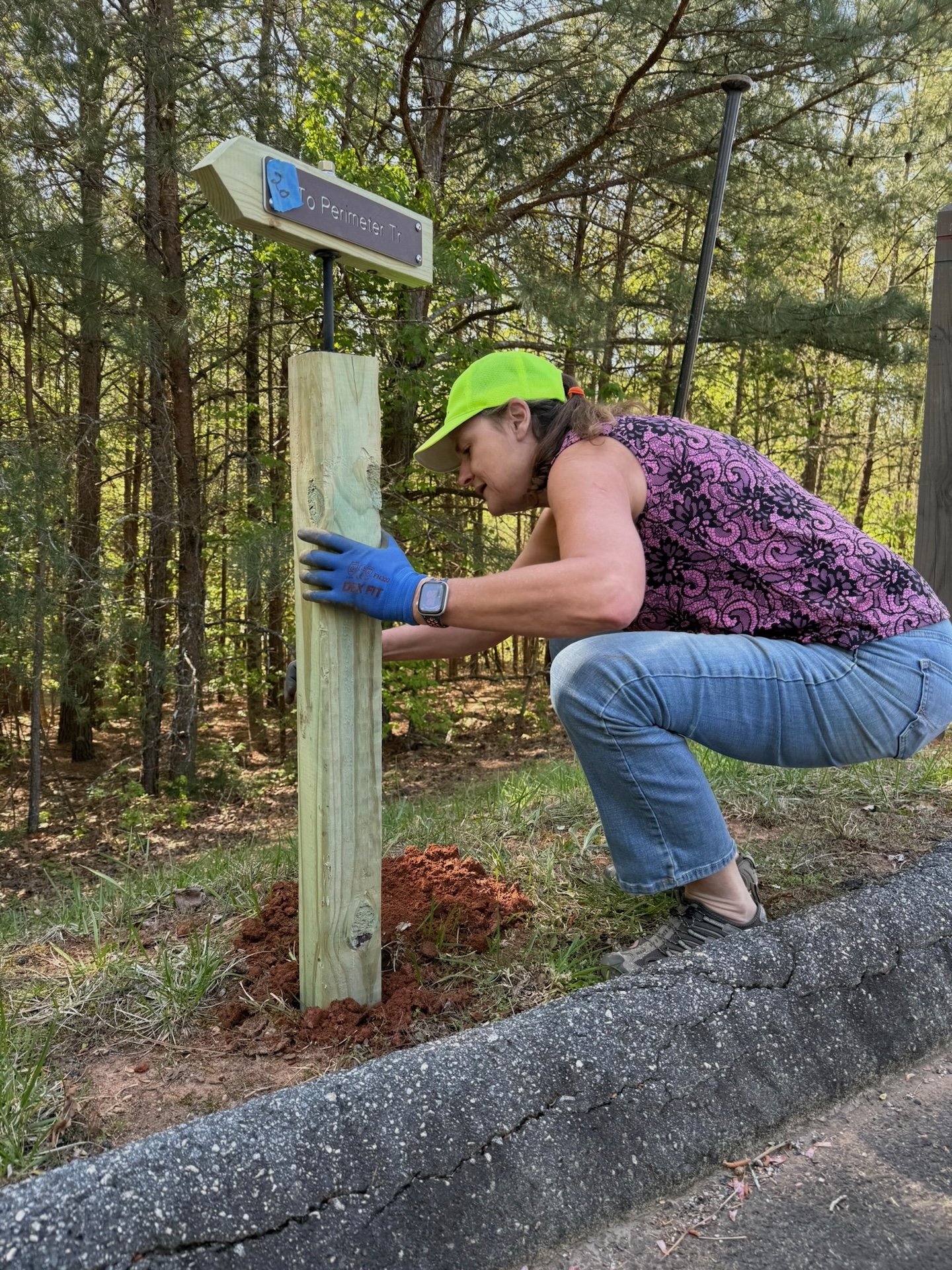Big Canoe Trails Get a Signage Makeover
If you’ve walked the trails lately and noticed crisp, clean signage guiding your way, you’re seeing the results of a major improvement project spearheaded by the Big Canoe Trails Committee (BCTC).
For decades, trail signs in Big Canoe were made of sandblasted wood—charming but high-maintenance. Paint peeled, lichen crept in, and wood rotted. Some signs had been weathering the elements since the 1990s.
Enter a new era of trail signage: smart, durable, and beautifully designed.
The new signs use engraved plastic placards mounted on natural wood arrow boards, all affixed to a rugged metal post system. The placards are made from ColorCore—a layered plastic that reveals white lettering when engraved into its brown surface. No paint required. The lettering, done in the legible and appropriately named National Parks font, is crisp and easy to read, even on narrow boards.
Better still, these placards can be reused. If a wood backing deteriorates or a trail needs to be renamed, just swap out the board or the placard—no re-engraving required.
The trail name and the directional arrow are now separated. A single board can have one, two, or no arrows, and trail names are standardized in 12-inch rectangular placards. This modular design is not only more elegant, but also allows for easier installation and maintenance.
The new system was the brainchild of BCTC member Joe Tipton, who also created a similar design a few years ago in High Gap Park. With input from the committee and generous donations from the RidgeRunners and the Wildflower Bunch, the concept became reality.
The numbers speak volumes: 134 locations, 251 wood arrow boards, and 365 engraved placards across all parks.
From conception to installation, this project involved a dedicated team of volunteers—planning, engraving, welding, drilling, hauling, digging, and updating the database to reflect the new system. The result is a unified signage style that enhances both navigation and aesthetics throughout Big Canoe’s 25 miles of trails.
It’s a modern upgrade that honors our natural setting—and it’s built to last.
New signs with fresh pressure-treated post and sign back, plastic two tone placards, and hand-cut and welded hardware support.
Old signage in desperate need of upgrading.
The timbers for the posts have been cut to size and pre-drilled for the hardware.
Liz Using a planer to smooth the top and bottom edge of a sign to improve stacking.
Mike Sheely adjusting his portable table saw, powered by a generator at the Borrow Pit shed, getting ready to cut the points on the boards that he just finished cutting to size. These will form the individual signs points and be the support for the plastic placard with the trail name.
An example of a finished sign post. Up to 4 stacked signs per post.
Assembly of signs following a plan for each park.
Alan Moffatt installing new sign at Confluence Point on the Jeep Trail
New Trails Committee member Scott Hayes (L) and Mickey Green are overseers of the portion of Nancy Womack Trail from Valley View to Ponder Point. They helped carry and install the new sign for Ponder Point.
Liz Scherer installing a sign at Wildcat Recreation Area. After a sign is installed she enters it into a database of trail structures.
An example of a finished sign post. Up to 4 stacked signs per post.
Alan Moffatt and his Jeep were instrumental in getting the signs to the areas accessible through the Jeep Trail.












